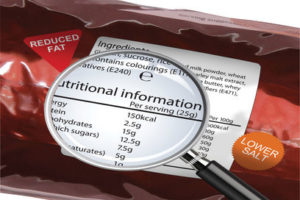 To empower Americans to ‘get the 411’ on what’s in the foods and beverages they’re consuming, April 11, 2013 (4/11) has been declared “Read Your Labels Day” by Citizens for Health, one of the country’s oldest and most respected consumer advocacy groups.
To empower Americans to ‘get the 411’ on what’s in the foods and beverages they’re consuming, April 11, 2013 (4/11) has been declared “Read Your Labels Day” by Citizens for Health, one of the country’s oldest and most respected consumer advocacy groups.
Families are encouraged to read the labels on products in their kitchen pantries and refrigerators, and on grocery store shelves, and look for the “Top 10 Ingredients to Avoid,” a list of today’s most worrisome sweeteners, preservatives, and industrial chemical additives, such as high fructose corn syrup, aspartame, and monosodium glutamate.
They’re also asked to take photos of these products and share their photos on Instagram using the hashtag #ReadYourLabels.
 Through its website Food IdentityTheft.com, the non-profit organization keeps consumers informed about food safety issues. On its blog, it has provided comprehensive information on each of these ten most controversial ingredients that can be found in hundreds of processed foods, including what they’re used for and why consumers should avoid products that contain them.
Through its website Food IdentityTheft.com, the non-profit organization keeps consumers informed about food safety issues. On its blog, it has provided comprehensive information on each of these ten most controversial ingredients that can be found in hundreds of processed foods, including what they’re used for and why consumers should avoid products that contain them.
“Harmful food additives can contribute to many serious medical conditions that include diabetes, obesity and heart disease,” noted Harvard MD, Dr. Eva Selhub. “Eliminating these ‘top ten’ additives from your diet is an excellent start to healthier eating.”
While many shoppers scan the nutrition labels on packages looking for such things as saturated fats or sodium content, an independent study published in 2011 by the food and beverage research group Mintel reported that less than half of consumers surveyed read the ingredients labels on the foods they purchased in supermarkets.
“The majority of us don’t check the list of ingredients on food package labels,” said Jim Turner , who chairs Citizens for Health.
“The big food manufacturers are counting on this. If we don’t read or understand the ingredients in their products, they can put pretty much whatever they want to into our food.”

You must be logged in to post a comment Login